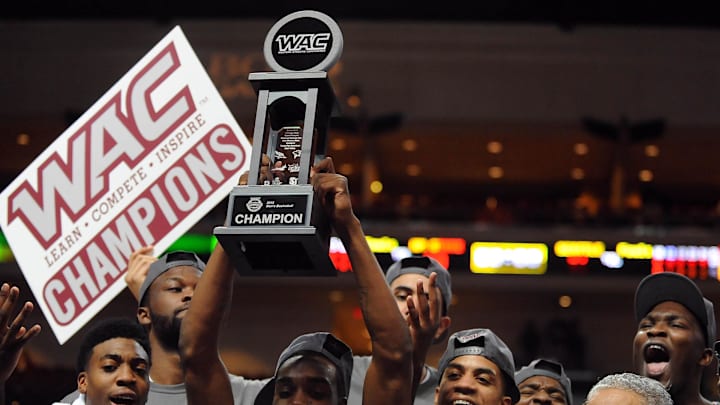The world of collegiate athletics is one of constant change and conference realignment is the greatest example of that. Even just looking at the conference makeups from twenty years ago shows a different landscape for college sports. Many of those changes are made with football at the forefront, though basketball clearly plays a major role, especially for the numerous non-football schools at the D1 level.
Football is playing that big role in this latest announcement, a move that will virtually bring an end to the Western Athletic Conference. The league, which has been hemorrhaging members in recent years, has had a partnership with the ASUN for the last few years, forming an FCS football conference with enough members to send their champion to the playoffs. Now, those two leagues will be coming together to form the United Athletic Conference and changing the landscape of these leagues yet again.
Believe it or not the WAC was formed way back in 1962 and would certainly be considered a major conference by today’s standards. The original league included Arizona, Arizona State, BYU, New Mexico, Utah, and Wyoming, while adding prominent schools like Colorado State and San Diego State in the following years. Many of those members departed for the Mountain West, Pac-10, and other leagues and were replaced by new members in an ever-changing landscape.
This past season saw nine teams playing basketball in the WAC, with another fantastic result for Grand Canyon. Those Antelopes are joining the new-look Mountain West, just one of several moves announced well before today. The league is also losing Southern Utah and Utah Tech to the Big Sky, Cal Baptist and Utah Valley to the Big West, and Seattle to the WCC. The three remaining members are Abilene Christian, Tarleton State, and UT Arlington and all three will be part of this new UAC.
Many changes have come over the years and this recent flurry likely marks the end for the WAC. We can’t count this league completely out right now, but there’s virtually zero chance this conference will support any sports in the coming years. All of those moves, aside from Seattle’s exit, will go into effect in 2026 as the UAC fills the place of this league. Then again, many thought the Pac-12 was dead after nearly all of their members exited in recent years.
Prominent conferences of yesteryear have come and gone and the tale of the WAC is no different. The fight for survival and the recent court rulings have made collegiate athletics an even more difficult landscape especially for these mid-major programs. We can only hope that each of these programs fit well in their new leagues and raise a glass to what the WAC gave us over the last 63 years.
